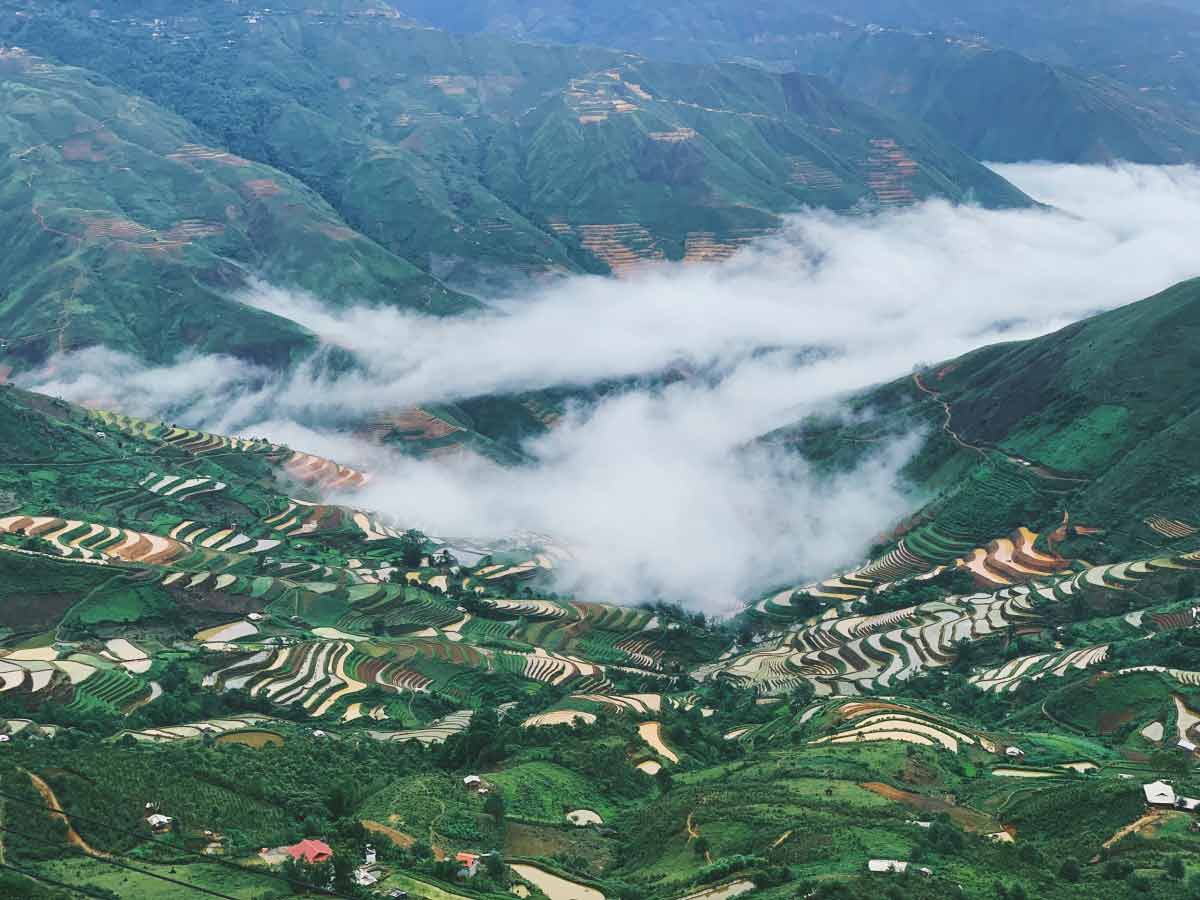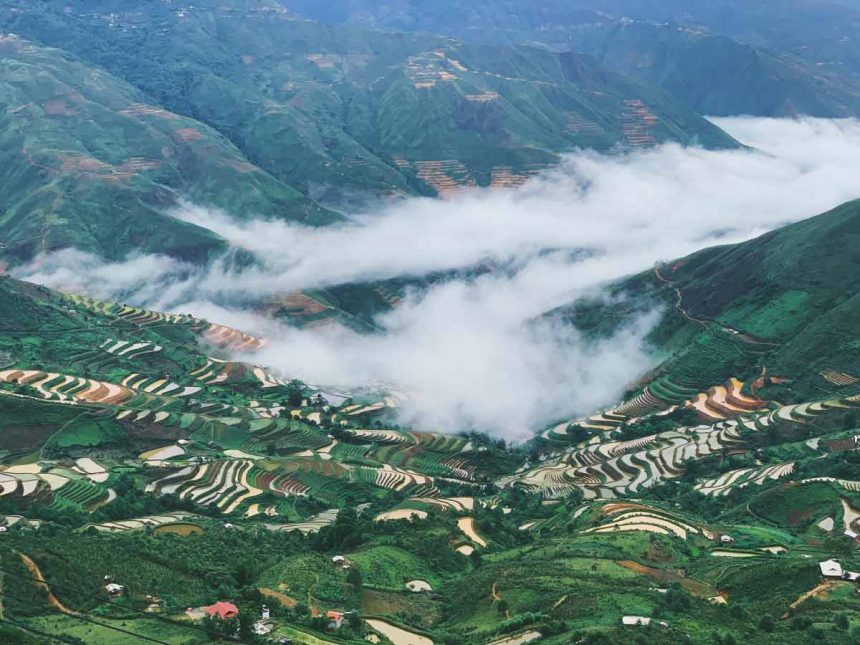Northern Vietnam’s mountainous Ta Xua Commune beckons travelers seeking cloud formations, mountain air, and a broadening of their cultural horizons.

Ta Xua Commune is located on the border of Yen Bai and Son La provinces, about 200 kilometers from Hanoi.
The most beautiful cloud hunting season in Ta Xua is from around September to early March. From April to May, you will also have the opportunity to admire the terraced fields in the rainy season.
In addition to the sea of clouds, the scenery and fresh air in Ta Xua are also things that attract tourists.
According to local people and guides, tourists coming to Ta Xua during the summer rains are often discouraged and lose interest. However, after the rain stops, the clouds come back in abundance, as thick and beautiful as during the prime cloud hunting season.
Tourists coming to Ta Xua this season often joke that you have to be skilled to hunt clouds or see this as a place to test your luck. If you encounter a sea of white, floating clouds, it means you have good luck. Some groups said they’ve travelled to Ta Xua 2-3 times without seeing a single cloud.
Beautiful places to watch clouds in Ta Xua include the Ta Xua commune center, Khe Cai Village (about two kilometers from the center) and the Ta Xua “Dinosaur spine” Mountain (about 14 kilometers from the center).
Or you can watch clouds from homestays in the commune center. Most homestays here serve drinks for an average of VND40,000 ($1.60), so even if you don’t stay, you can still visit and take photos.
Ta Xua Peak is also one of the ideal places to see clouds and watch the sunset. It is about two kilometers from the center of Ta Xua Commune, with many homestays and cafes nearby. Along the road, there are a number of shops selling bamboo-tube rice and grilled meat skewers.
In addition to famous cloud hunting spots such as “Dinosaur Spine Mountain,” the steppe area about 12 kilometers from Ta Xua Center is also a spot that attracts tourists. Visitors to the steppe must buy a ticket, priced at VND30,000 ($1.20) per person.
In the same direction as the Ta Xua Steppes, visitors can go to Dolphin Cliff, characterized by two large rocks resembling dolphins swimming in a sea of clouds.
Other nearby attractions include Lonely Tree, a solitary Indian crabapple tree (docynia indica) that allows travelers to gaze upon the Suoi Sap River, and the Suoi Sap Hydropower Plant. These locations are approximately two kilometers apart.
From Hanoi, there are currently many high-quality mini buses and sleeper buses that travel straight to Ta Xua, with prices ranging from VND300,000 to VND350,000 ($11.80 to $13.80) per trip, with travel time being about 5 hours. Limousine services can also take tourists straight to Ta Xua Commune.
In Ta Xua, you can rent a motorbike to visit convenient locations for about VND150,000 to VND200,000 ($6 to $8) per day. If you are not confident in your driving, you should hire a taxi or motorbike taxi from a local because the road is quite steep, narrow, and has many turns. During the rainy season, due to the mountainous terrain, you may encounter muddy roads and landslides.
Ta Xua has only developed tourism in recent years. There are no large hotels or luxury accommodations. In the area, there are about 30 homestays and motels, with prices ranging from VND200,000 to VND1 million ($8 to $39) per night, depending on the room type.
Located at an altitude of more than 2,800 meters above sea level, Ta Xua has a cool climate all year round. Even when visiting Ta Xua in the summer, you should still bring a light jacket.
Dining in Ta Xua offers many options with specialties being northwest dishes such as buffalo meat, Chinese sausage, and bamboo-tube rice. The cold weather in the evening here is suitable for enjoying hotpot or grilled food.
Shops are mainly concentrated in the central Ta Xua area. Some restaurants are highly appreciated by tourists such as A Phu, H’Mong, and Bep Tam. In addition, most homestays serve food.

